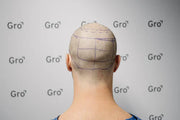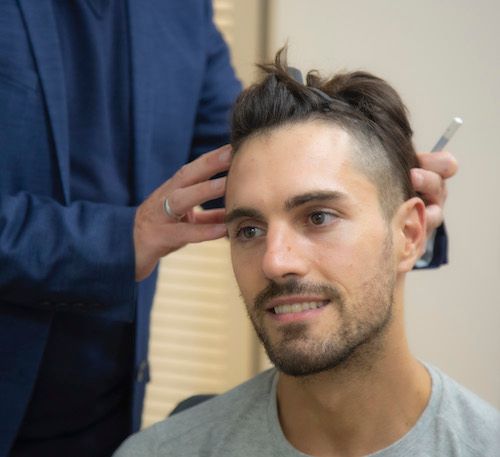Relax! We’re not going to talk politics, but rather Donald Trump’s “unusual” hair-do. It has been the subject of much debate and rightly so…..what is going on with that hair!? The strange orangish-yellow sheet of dry fluff is scraped forward then back or sideways, and most astonishing is when the wind gets under it and peels it up in one big mass.
In this article we discuss the secrecy around the head of hair that’s a frontrunner in the race for the world’s worst hair-do and the hair transplant technique that may have made it that way.
If you suffer from hair loss, answer these 3 questions to discover the best treatment option for you.
The Secret To That Hair
We’re told that the secret to Donald Trump’s hair is all due to the quick drying, humidity defying hair spray, aptly named “Helmet Hair”. He also claims that his hair is all his own, which would still be true even if he had undergone a hair transplant. People close to Trump claim that he may have had “hair flap” hair transplant procedure where the scalp with the wanted hair is cut, “twisted” and stitched into a position that covers the balding area. This method is not longer used for obvious reasons like the trauma caused to the scalp but also, because the resulting hair direction would be unnatural. Opinions differ as to the true story, however there is a hair transplant method that continues today that has similarities to the “hair flap” technique.
The FUT Method
The modern day version of the “hair flap” technique is referred to as FUT (Follicular Unit Transplant) or “the strip” method. During FUT, donor hair follicles are removed in a long thin strip of scalp and divided into single units under a microscope. The site where the scalp is removed is then sewn back together. This procedure is fairly commonly used in Australia as it minimises the time required for the extraction by a doctor and is relatively cost-effective. However, it creates a long thin scar to the back of the patients’ scalp that may be visible under short hair.
Reception holes are then created in the treatment area and the hair follicles are placed into the holes with forceps, allowing little control over the angle, direction and depth. The reception holes are made with sharp tools that create micro-scars on the scalp leaving an “orange peel” appearance. Another drawback: these holes require a gap between each graft, making it difficult to achieve the required density. Implantation is normally done by technicians, not by a doctor. The follicles undergo trauma due to the increased handling that significantly affects the rate of regrowth, which is around 60%-70%.
The removal of the strip may cause retraction of the scalp backwards giving the impression of a decline in the hairline. A phenomenon that is likely to increase when multiple interventions are needed. The scar creates a tension in the scalp which weakens the follicles in the periphery of the scar.

The Gro Difference
Hair Implantation sessions are performed by a doctor from start to finish. The follicles are extracted with a specialised tool designed to minimise damage to the hair follicle and surrounding scalp tissue. Individual follicles are kept in a growth solution called HypoThermosolTM at a constant temperature to ensure optimum development and growth after placement. HypoThermosolTM is generally used in major organ transplant procedures and results in maximised hair survival rate. Hair follicles are implanted using another specialised implanter tool, that allows the Gro doctor to control depth, direction and angle of placement, giving you a 100% natural looking result. There is also no need to create recipient holes in the treatment area with Gro. This allows the doctor to obtain higher hair density when necessary.
Next Steps
If you have been considering treatment options for hair loss, you can click on one of the buttons below or call us on 1300 787 563 so we can answer any questions you have and show you how the Gro difference can provide a natural, permanent solution to your hair loss.













